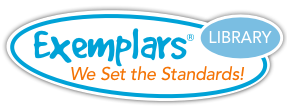Grade 3 - Geometry Unit
The Geometry Unit involves analyzing the defining attributes of 2-dimensional shapes in order to answer questions such as:
- What characteristics do all of the shapes in this category possess?
- How can you create additional examples to fit into the same category? Defend why your examples belong in the category.
- How can you create example shapes that do NOT fit into the category? Defend why your examples do NOT fit within the category.
Math Concepts and Skills:
The student analyzes attributes of 2- and 3-dimensional geometric figures to develop generalizations about their properties.
The student:
- classifies 3-dimensional solids, including cones, cylinders, spheres, triangular and rectangular prisms—including cubes—based on attributes using formal geometric language such as vertex, edge, and face.
- uses attributes to classify rhombuses, parallelograms, trapezoids, rectangles—including squares—as examples of quadrilaterals and draws examples of quadrilaterals that do not belong to any of these subcategories.
Summative Assessment Task
Students name or draw five different quadrilaterals that can be made from 24 rocks and 24 sticks.
Instructional Tasks/Formative Assessments
Students determine the number of pennies and straws needed to make a series of shapes.
Using gumdrops and toothpicks, students create four different shapes and name three shapes.
Students draw and name three different triangles using dots for the vertices and lines for the sides.
Students determine how many quadrilaterals can be made using lines for sides and dots for vertices.
